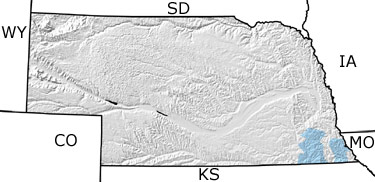Paleontology and geologyPermian rocks are exposed in the southeastern part of the state. The state was above sea level for about half of the Permian; the rest of the time it was covered by a warm, shallow sea in which life abounded. Water depths fluctuated between shallow and deep, alternately depositing limestone reef materials and black shales. The limestones contain fossils of stromatolites, fusilinids, brachiopods, bryozoans, molluscs, corals, trilobites, eurypterids, and crinoids. The black shales contain very well-preserved fossils, including crustaceans, conodonts, sharks, and fish. As sea levels rose and fell, coastlines "marched" back and forth across the state. The climate was too dry for swamps and marshes to form, so when the sea retreated, it left behind arid, desert-like land. The sea retreated in the late Permian, and erosion removed much of the Permian rock record and its fossils, although a few amphibian, lungfish, and plant remains have been found in fresh or brackish water deposits. |

